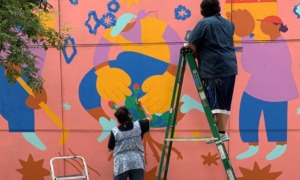
SpeedKingz/Shutterstock
.
Researchers at the University of Chicago’s Chapin Hall have found that traditional homelessness surveys seem to miss large swaths of young people. “Until we know how big the problem is, we’re not going to effectively address it and build solutions,” said Beth Horwitz, a co-author of their latest report and a policy analyst at Chapin Hall.
One key finding: “Our survey shows how hard it is to count young people visually like we do the adult homeless,” she observed, citing a common technique used in HUD’s mandated “Point-In-Time,” 24-hour surveys of the homeless in “unsheltered ” sleeping locations and shelters conducted on one day in January.
Without peer involvement, these approaches too often miss the reality of the lives of young people without stable housing, researchers concluded. They worked with 22 U.S. counties in 2016 to involve youths with “lived experience” in counting homeless youth.
“Youth participated in planning meetings and helped determine where and when to count,” the report noted. “They identified locations where youth experiencing homelessness were likely to be found,” such as libraries, 24-hour retail establishments and places with free Wi-Fi. “Some of these locations were unknown to local service providers.” At the same time, the researchers found, nearly 40 percent of youth initially spotted as homeless by the surveyors were in fact living in stable housing — when interviewed by peers using the questionnaires contained in Chapin Hall’s youth count toolkit.
The report’s first lesson: “Engage youth who have lived experience with homelessness in all aspects of planning and execution of the youth count.” Others included involving a broad range of stakeholders; asking young people where they slept the night before the one-day count, which Chapin Hill researchers now believe should be expanded beyond one day; and going beyond HUD by counting all youths who don’t have a reliable place to stay. The most critical element, Horwitz noted, is not just having peers involved, but those who are known in the communities they’re surveying.
‘This is misinformation’
“Why pay $80,000 to a staff person to do this when there is a youth who needs a job and can do this work better than we can?” asked Steve Jellá, the associate executive director of San Diego Youth Services (SDYS). It was the lead local agency in the Chapin Hall-style survey teams that involved peers paid about $10 an hour and professionals.
As a result of SDYS’ successful use of the Chapin Hall 24-hour survey methodology in August 2016, the broad-based Regional Task Force on the Homeless San Diego adopted the approach but extended it to a week in its 2017 survey. This count made a stunning discovery: It found 425 percent more homeless youth — about 1,500 — than were counted in the task force’s 2015 survey using old-fashioned methods, which reported a mere 30 unaccompanied homeless minors and 322 unaccompanied young adults between ages 18 and 24.
The Chapin Hall model “is a method of doing a youth count that has been successful,” said Megan Hustings, the interim director of the National Coalition on the Homeless, who noted that it still isn’t widely used. Her organization has sharply criticized HUD’s homeless count as being too limited. HUD concludes that there are only 40,000 unaccompanied homeless people under 25 during any day. “This is misinformation and doesn’t catch up with everyone,” she said. In comparison, Chapin Hall’s telephone survey last fall found that roughly four million young people under 25 (both unaccompanied and with a guardian) were homeless during the course of a year.
Accuracy made a crucial difference in San Diego: “Our data has really demonstrated the need,” said SDYS CEO Walter Philips. The new youth counts led to a $2 million state grant to expand county drop-in centers as gateways to housing and other services, boosted by an $8 million HUD homeless youth grant last month to the county. Vanessa Arteaga, the program manager of SDYS’ TAY Academy outreach programs, said they will soon be able to expand their hours, expand housing options and hire full-time staff for the drop-in center. “The survey means more funding,” she said.
The Chapin Hall report, issued in July, is part of a series of research briefs by its Voices of Youth Count initiative to address undercounting of homeless youth.
This story has been updated.































